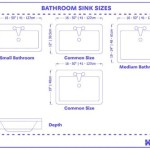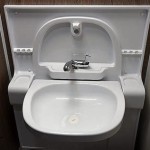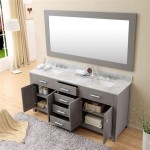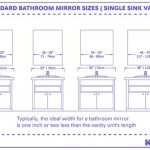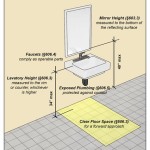Designing a Counter Sink Bathroom: A Guide to Functionality and Style
A counter sink bathroom design offers a unique and modern approach to bathroom aesthetics. This design integrates the sink into the countertop, creating a streamlined and spacious look. Counter sink bathrooms are gaining popularity for their ability to blend seamlessly with various design styles, enhance functionality, and offer a touch of sophistication to the space.
When designing a counter sink bathroom, several factors come into play, including the countertop material, sink style, faucet choice, and overall design theme. This article will delve into the key elements of designing a counter sink bathroom, providing insights into crucial considerations and highlighting the benefits of this design approach.
Countertop Material Considerations
Choosing the right countertop material is essential for a successful counter sink bathroom design. Several factors influence the selection, including durability, maintenance requirements, and aesthetic preferences.
Natural Stone: Granite, marble, and quartz offer natural beauty and durability. These materials are scratch-resistant, heat-resistant, and generally easy to clean. However, they can be porous and may require sealing to prevent staining. The cost of natural stone can vary significantly depending on the type and quality.
Engineered Stone: Engineered stone, such as quartz, is a composite material that blends natural stone aggregates with resins. It offers the look of natural stone with enhanced durability and lower maintenance requirements. Engineered stone is also more stain-resistant and comes in a wide variety of colors and patterns.
Solid Surface: Solid surface materials, like Corian, are non-porous and stain-resistant. They offer a seamless appearance and are easily repaired. However, they are susceptible to scratches and heat damage.
Laminate: Laminate countertops are an affordable option and are available in a wide range of styles and colors. They are resistant to moisture and heat, but they can be scratched and chipped, and they may have a less sophisticated appearance than natural or engineered stone.
Sink Style and Functionality
The choice of sink style is a crucial design aspect in a counter sink bathroom. A variety of shapes, sizes, and materials are available to suit different design preferences and bathroom layouts.
Undermount Sink: Undermount sinks are typically made of porcelain or stainless steel and are installed beneath the countertop. This creates a sleek, minimalist look and simplifies cleaning, as there is no rim to catch debris.
Vessel Sink: Vessel sinks are a popular choice for their unique aesthetic appeal. They sit on top of the counter and are often made of ceramic, glass, or metal. Vessel sinks offer a more contemporary look and can add a statement piece to the bathroom. However, they can be more difficult to clean, as water tends to splash onto the counter.
Integrated Sink: Integrated sinks are crafted from the same material as the countertop, creating a seamless and modern look. They are typically made of engineered stone or solid surface materials. Integrated sinks offer a sleek design and easy cleaning, but they can be more expensive than other options.
Faucet Choice and Design
The faucet is an integral part of the counter sink bathroom design and significantly impacts functionality and aesthetics.
Material: Faucets are typically made of chrome, nickel, brass, or stainless steel. Consider the durability, finish, and overall aesthetic to choose a faucet that complements the countertop material and sink style.
Style: Faucet styles range from traditional to modern, with various finishes and features. Consider the overall design theme of the bathroom and choose a faucet that enhances the aesthetic.
Functionality: Faucet features like a spray nozzle, temperature control, and pressure settings can enhance functionality and user experience. These features are particularly important for counter sink bathrooms, as the faucet may be located directly above the sink.
Designing a Counter Sink Bathroom
Designing a counter sink bathroom requires careful planning and consideration of several factors. Integrating the sink into the countertop can influence the placement of other fixtures, storage solutions, and the overall flow of the space.
Layout: Consider the size and configuration of the bathroom to plan the layout of the sink, vanity, and other fixtures. Optimize the use of space for functionality and visual appeal.
Storage: Counter sink bathrooms often feature built-in cabinetry or open shelving to maximize storage space. Consider the storage needs and choose solutions that complement the design aesthetic.
Lighting: Adequate lighting is crucial for a functional and visually appealing counter sink bathroom. Include both ambient and task lighting to illuminate the sink area effectively and enhance the overall ambiance of the space.

Beautiful Bathroom Countertop Designs For A Luxurious Look Homes

Wash Basin Design 65 Washing Space Ideas For Bathroom Dining Area Kitchen

Bathroom Vanity Counter Sink Ideas

Wash Basin Design 65 Washing Space Ideas For Bathroom Dining Area Kitchen

7 Countertop Materials For Bathrooms

Pros Cons Of A Vessel Sink

Bathroom Countertops Ideas For Your Home Designcafe

Wash Area Design Interior Dining Room Washbasin

The Secret To Selecting Perfect Bathroom Washbasin

Special Design Acrylic Solid Surface Countertop Wash Basin Kingkonree
Related Posts
